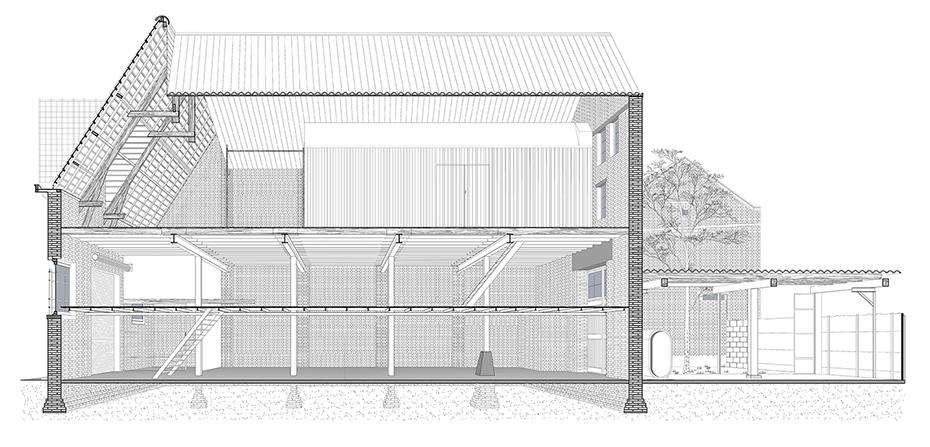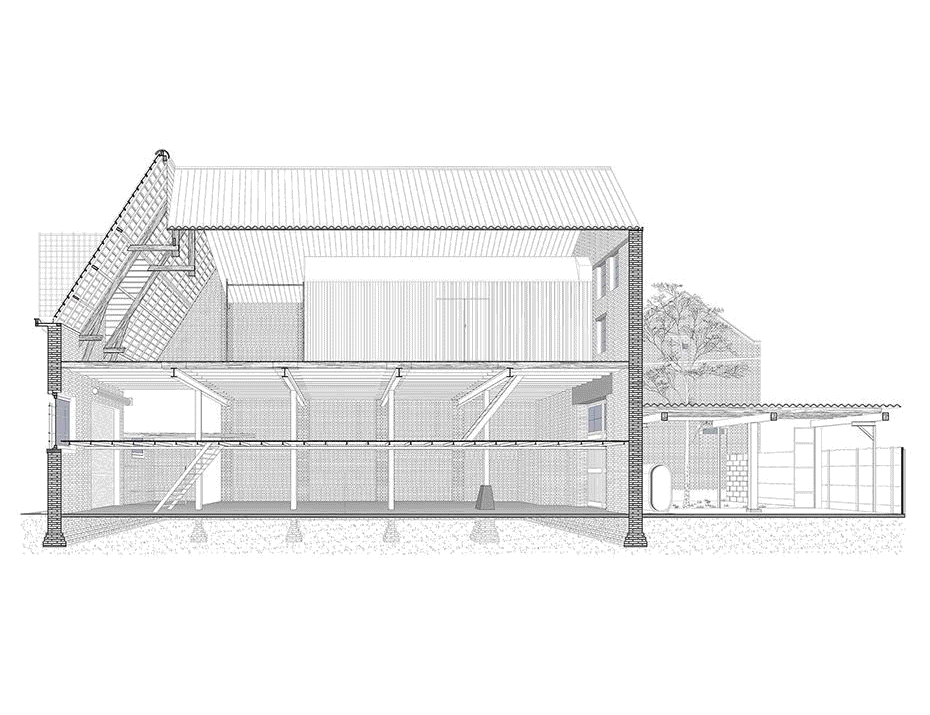Tutors: Joris Van Reusel, Daan De Volder, Pascal François
Engagement: Legacy
Academiejaar 2020-21, semester 2, Gent
ARCHITECTURE AS GAMECHANGER
ARCHITECTUUR ALS SPELMAKER
Deze studio kadert in de AOB ‘Spatial Dysfunctions Strategies’ (sinds 2016), waarin de remediëring van ruimtelijke dysfuncties door het inzetten van architecturale strategieën wordt onderzocht.

Beeld 1: Atelier Denys. Pilootproject voor de revitalisatie van dorp Doel (Linde Redant-Tim Schautteet-
Robbe Schelfhout-Suzan Vercaempst MA24 18-19 – Doelland 2019)

Beeld 2-6: Voorbeeldproject breed gedragen stadsrevitalisatie: Luchtsingel /Park Pompenburg Rotterdam
2014-2019 (ZUS – Zones Urbaines Sensibles– F. Ernst – O. Van Duivenbode)

Beeld 7-8: Voorbeeldproject stadsnatuur: Dakakker + Park Pompenburg Rotterdam 2014-2019 (ZUS –
Zones Urbaines Sensibles– F. Ernst – O. Van Duivenbode)

Beeld 9: Aalst, binnengebied met garageboxen – studiegebied Studio AAP 2019-
2020 – Why Aalst?

Beeld 10: Lichtproject met restanten van gevelreclame in Doel
(Toon Claerbout, 2020)
De studio stelt zich tot doel om (ruimtelijke) strategieën te ontwikkelen die we als architect kunnen inzetten om probleemgebieden te remediëren. Het betreft ontwerpend onderzoek dat uitmondt in een strategisch ontwerp a.d.h.v. van een concrete case. Een sterke stellingname en betrokkenheid loont.
Architectuur omhelst veel meer dan het louter objectmatig ontwerpen. Architectuur maakt niet alleen een wezenlijk deel uit van de maatschappelijke ruimte, ze vormt ze, inspireert ze, stimuleert en organiseert ze. En zoals wij de dingen vormen vormen de dingen ons.
Architectuur levert in deze een (retro)actieve bijdrage aan het maatschappelijk debat. Politieke en bestuurlijke kwesties, ecologische en sociale vraagstukken zijn immers ook steeds gekoppeld aan ruimtelijke uitdagingen. Ook het ‘nieuwe normaal’ dwingt ons om kritisch en anders naar de wereld te kijken en nieuwe kansen bloot te leggen.
In deze studio onderzoeken we hoe we door middel van een architecturale strategische actie (bv.: tijdelijke permanentie – permanente tijdelijkheid, slow urbanisme, tekenen als actie, stadsnatuur…) een disfunctioneel gebied kunnen remediëren en zo een maatschappelijke verantwoordelijkheid kunnen (her-)valoriseren tot een levendig biotoop en een rijke inclusieve omgeving.
We bedenken ruimtelijke strategieën op diverse schalen en zetten die in om probleemgebieden (brownfields, verloederde gebieden, gebieden onder hoge druk …) te revitaliseren. Of om er minstens de kiemen van revitalisatie te zaaien. Architectuur kan zo het spel màken, de dynamiek aanwakkeren, de lijnen uitzetten.
Het resultaat van deze strategieën dienen we niet te zien als een groot abstract ruimtelijk plan maar eerder als een hands-on, concrete, chirurgisch precieze ingreep in een aangetast (stedelijk) weefsel.
De strategie wordt geconcretiseerd in een meervoudige output: ontwerpen op stedelijke/landschappelijke maar ook op architecturale schaal die publiek kan worden ingezet.
Een omschrijving van alle teamleden:
Joris Van Reusel:
architect,
Eigen praktijk: HOP.office architects (Antwerpen).
Expertise in publieke gebouwen, erfgoed, wonen, restauratie en herbestemming, nature inclusive design.
Aandacht voor: sociaal-ruimtelijke ordening, stadsnatuur en natuurbescherming
Quote: Engagez-vous!
Pascal Francois:
architect,
Eigen praktijk: Pascal Francois Architects (Aalst).
Expertise in: residentiële markt, commerciële panden, meergezinswoningen en sociale woningbouw.
Aandacht voor: het Detail.
Quote: Voulez-vous?
Daan De Volder:
architect, interieurarchitect en tuinontwerper.
Eigen praktijk: Daan De Volder Architects (Keerbergen).
Expertise in: renovatie, restauratie en herbestemming in de woning- en kantoormarkt.
Aandacht voor: architectuur als (elementaire onderdeel van de) sociale motor en de potenties van het landschappelijk interieur.
Quote: Indignez vous!
Architecture as gamechanger
(Summary – extract from AOB-report)
Créer, c’est résister
Resister, c’est créer
(Stéphane Hessel)
Started from a simple on-site design exercise in the historic community of Doel in 2015, the studio evolved in to a long term engagement towards the sustainable development of a disfunctional, highly problematic and complex region. The abandoned and nearly left village was planned to disappear for the building of new harbour infrastructure (a tidal dock and containerterminals).
It turned out in Doelland, an academic platform based upon architectural practice and actions in collaboration with a broad spectrum of local stakeholders, in which education (bachelor- and masterdegree students from Architecture and Urbanism & Spatial Planning and their designteachers-architects), research and community service created a succesfull (tough not intented) dynamic process and became a recognized voice in the public debate.
Empowered by the AOB/ADO-label in 2017 the studio combines research by design with hands-on fieldprojects and leads students towards high quality output products and the awareness of the power of public communication through their designwork. In the cross-over of architecture, urbanism, planning and sciences as ecology and antropology a continuous series of public presentations (i.w. 5 expositions, 3 workshops, lectures,…), architectural actions (political debate, reclaiming the space and right on dwelling, caretaking of the public space,…), press publications, collaboration on official planning procedures and workgroups, has been produced.
The main result by now is the saving of the lost ‘ghosttown’ of Doel, since we were able to help convince both the Flemish government as the Port of Antwerp, based on the design and studywork and the long term vison called Plan Doelland, of the potential wins for all stakeholders if the scope could be turned towards the looking for alternatives for the destroying dock and terminals. Finally an out-of-the box idea for a boomerang-shaped new dock, in combination with internal densification for new infrastructures was accepted as the concept for a new planning. Currently the work of the studio is focusing on strategies for the development of pioneering projects in the Meantime (de Tussentijd) f.e. through a T-RUP Convenant, and a second case has been started in the city of Aalst.
The studio offers architecture and urbanism students a unique platform to relate their personal academic education and designwork to a meaningfull participative project in ‘the real world’ and the chance to explore new directions in architectural practice. It helps both the society and the students to grow a better future.
François, D. De Volder, J. Van Reusel
Gent, 05.05.2020
Studio brief as pdf.

